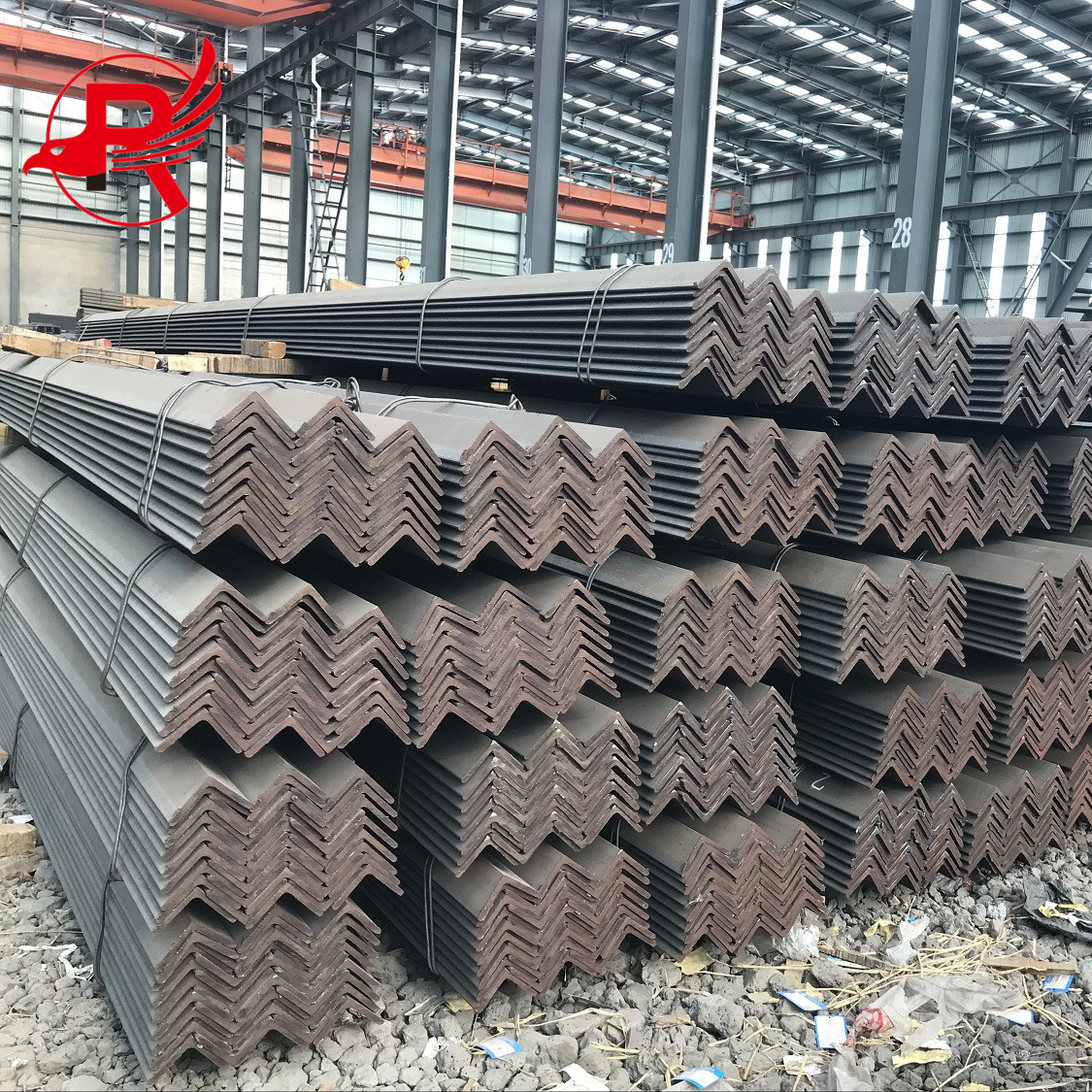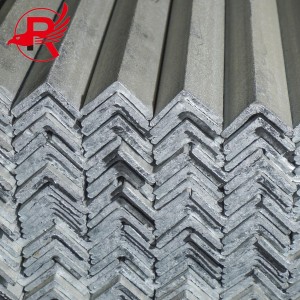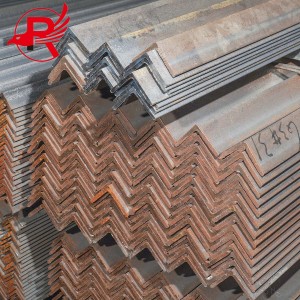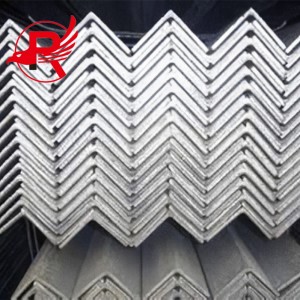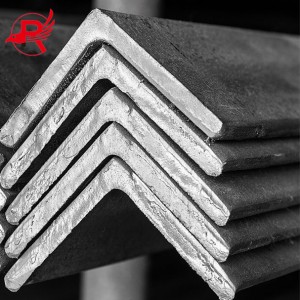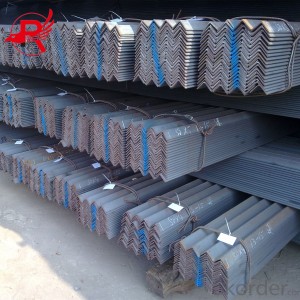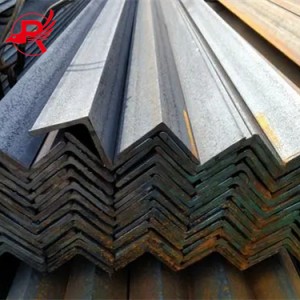ASTM A36 Angle Bar Low Carbon Steel
Product Detail
The steel angle is a type of carbon mild steel angle that is commonly used in construction and structural applications. Here are some key details about Q235 steel angle:
Material: steel is a commonly used carbon steel grade in construction and engineering applications. It is known for its strength, durability, and weldability, making it suitable for various structural purposes.
Size and Dimensions: steel angles are available in a range of standard sizes and dimensions, typically measured in millimeters. Common sizes include thickness and width measurements, such as 20mm x 20mm, 50mm x 50mm, or 75mm x 75mm. The length of the angle bar can vary based on specific project requirements.
Finishes: steel angles may be available in different finishes, including hot-dip galvanized, black, or painted finishes. The choice of finish depends on the intended application and environmental conditions.
Applications: steel angles are widely utilized in construction, engineering, and industrial applications. They are commonly used for framing, support structures, bracing, and as structural components in buildings, bridges, machinery, and various infrastructure projects.
Standards: steel angles are manufactured according to industry standards and specifications, ensuring consistency and quality.
Overall, steel angles are valued for their versatility, strength, and cost-effectiveness, making them an essential component in a wide range of construction and structural projects.
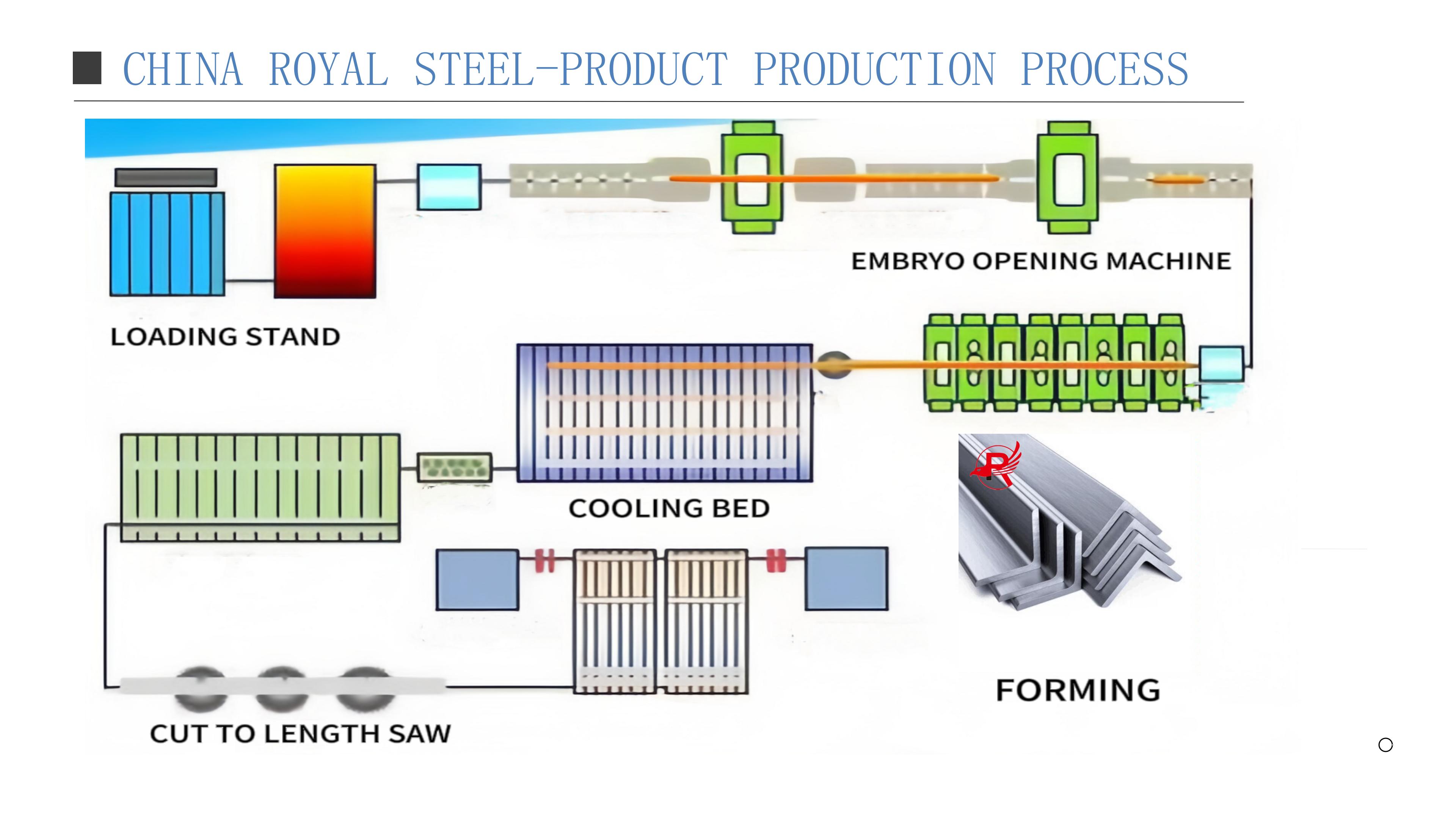
| Product Name | Steel Angle Bar |
| Technique | Hot Rolled |
| Material | Q195, Q215,Q235,Q345,ST37, A36,45# ,16Mn |
| Thickness | 1mm-10mm |
| Length | 1m-12m |
| Surface | Bare,Black,Oiled,Shot Blasted, Paint, Galvanized,or as Your Request |
| Certificate | Certificate |
| Place of Origin | China |
| Delivery Time | 15-20 working days |
| Payment terms | T/T, L/C |
| Sample | Available |
| Equal angle steel | |||||||
| Size | Weight | Size | Weight | Size | Weight | Size | Weight |
| (MM) | (KG/M) | (MM) | (KG/M) | (MM) | (KG/M) | (MM) | (KG/M) |
| 20*3 | 0.889 | 56*3 | 2.648 | 80*7 | 8.525 | 12*10 | 19.133 |
| 20*4 | 1.145 | 56*4 | 3.489 | 80*8 | 9.658 | 125*12 | 22.696 |
| 25*3 | 1.124 | 56*5 | 4.337 | 80*10 | 11.874 | 12*14 | 26.193 |
| 25*4 | 1.459 | 56*6 | 5.168 | 90*6 | 8.35 | 140*10 | 21.488 |
| 30*3 | 1.373 | 63*4 | 3.907 | 90*7 | 9.656 | 140*12 | 25.522 |
| 30*4 | 1.786 | 63*5 | 4.822 | 90*8 | 10.946 | 140*14 | 29.49 |
| 36*3 | 1.656 | 63*6 | 5.721 | 90*10 | 13.476 | 140*16 | 33.393 |
| 36*4 | 2.163 | 63*8 | 7.469 | 90*12 | 15.94 | 160*10 | 24.729 |
| 36*5 | 2.654 | 63*10 | 9.151 | 100*6 | 9.366 | 160*12 | 29.391 |
| 40*2.5 | 2.306 | 70*4 | 4.372 | 100*7 | 10.83 | 160*14 | 33.987 |
| 40*3 | 1.852 | 70*5 | 5.697 | 100*8 | 12.276 | 160*16 | 38.518 |
| 40*4 | 2.422 | 70*6 | 6.406 | 100*10 | 15.12 | 180*12 | 33.159 |
| 40*5 | 2.976 | 70*7 | 7.398 | 100*12 | 17.898 | 180*14 | 38.383 |
| 45*3 | 2.088 | 70*8 | 8.373 | 100*14 | 20.611 | 180*16 | 43.542 |
| 45*4 | 2.736 | 75*5 | 5.818 | 100*16 | 23.257 | 180*18 | 48.634 |
| 45*5 | 3.369 | 75*6 | 6.905 | 110*7 | 11.928 | 200*14 | 42.894 |
| 45*6 | 3.985 | 75*7 | 7.976 | 110*8 | 13.532 | 200*16 | 48.68 |
| 50*3 | 2.332 | 75*8 | 9.03 | 110*10 | 16.69 | 200*18 | 54.401 |
| 50*4 | 3.059 | 75*10 | 11.089 | 110*12 | 19.782 | 200*20 | 60.056 |
| 50*5 | 3.77 | 80*5 | 6.211 | 110*14 | 22.809 | 200*24 | 71.168 |
| 50*6 | 4.456 | 80*6 | 7.376 | 125*8 | 15.504 | ||
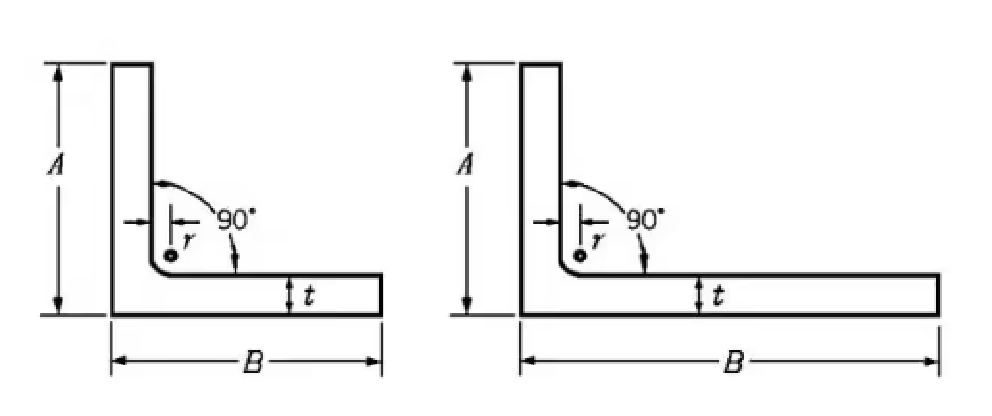
ASTM Equal Angle Steel
Grade:A36、A709、A572
Size:20x20mm-250x250mm
Standard:ASTM A36/A6M-14
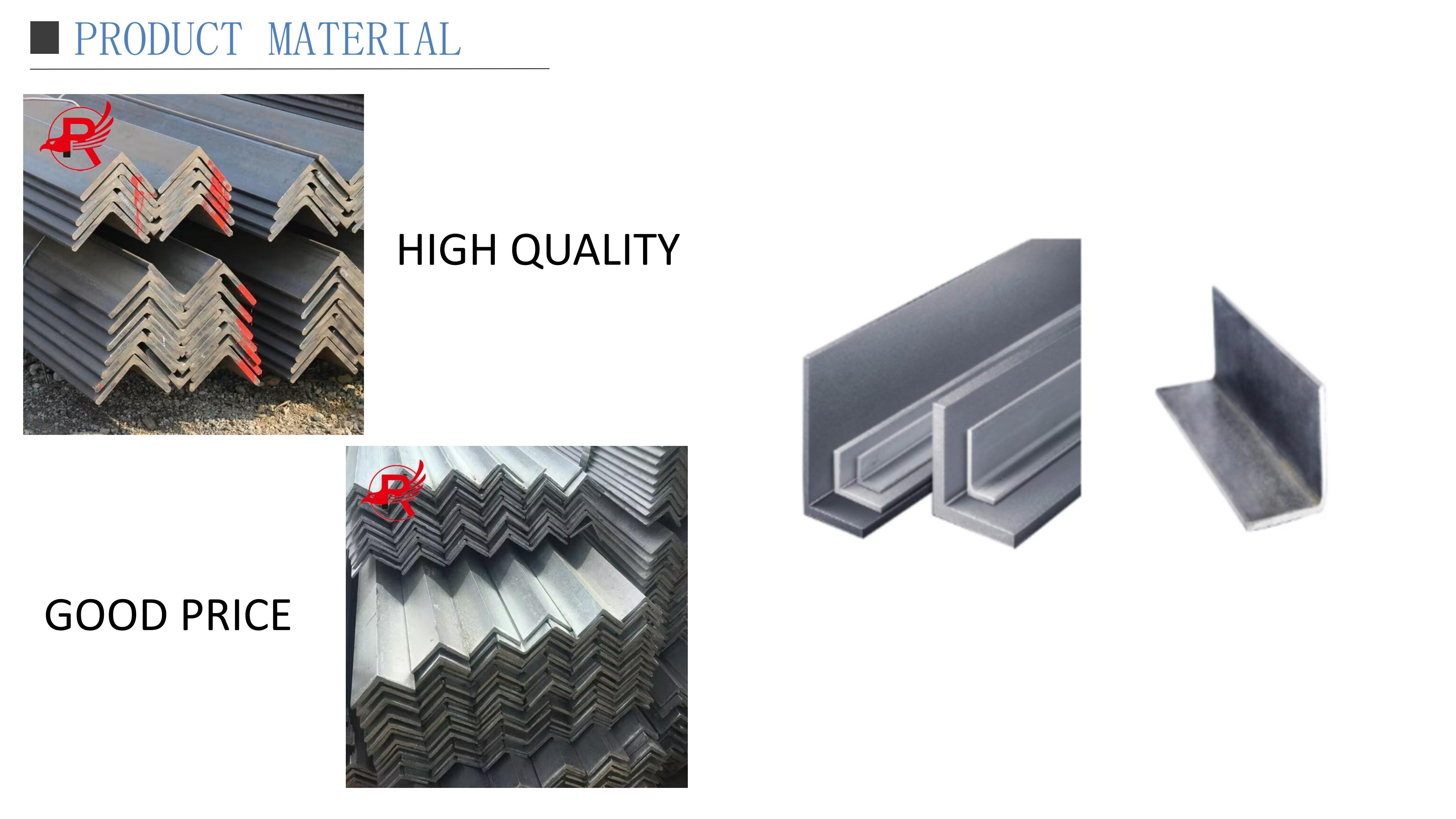
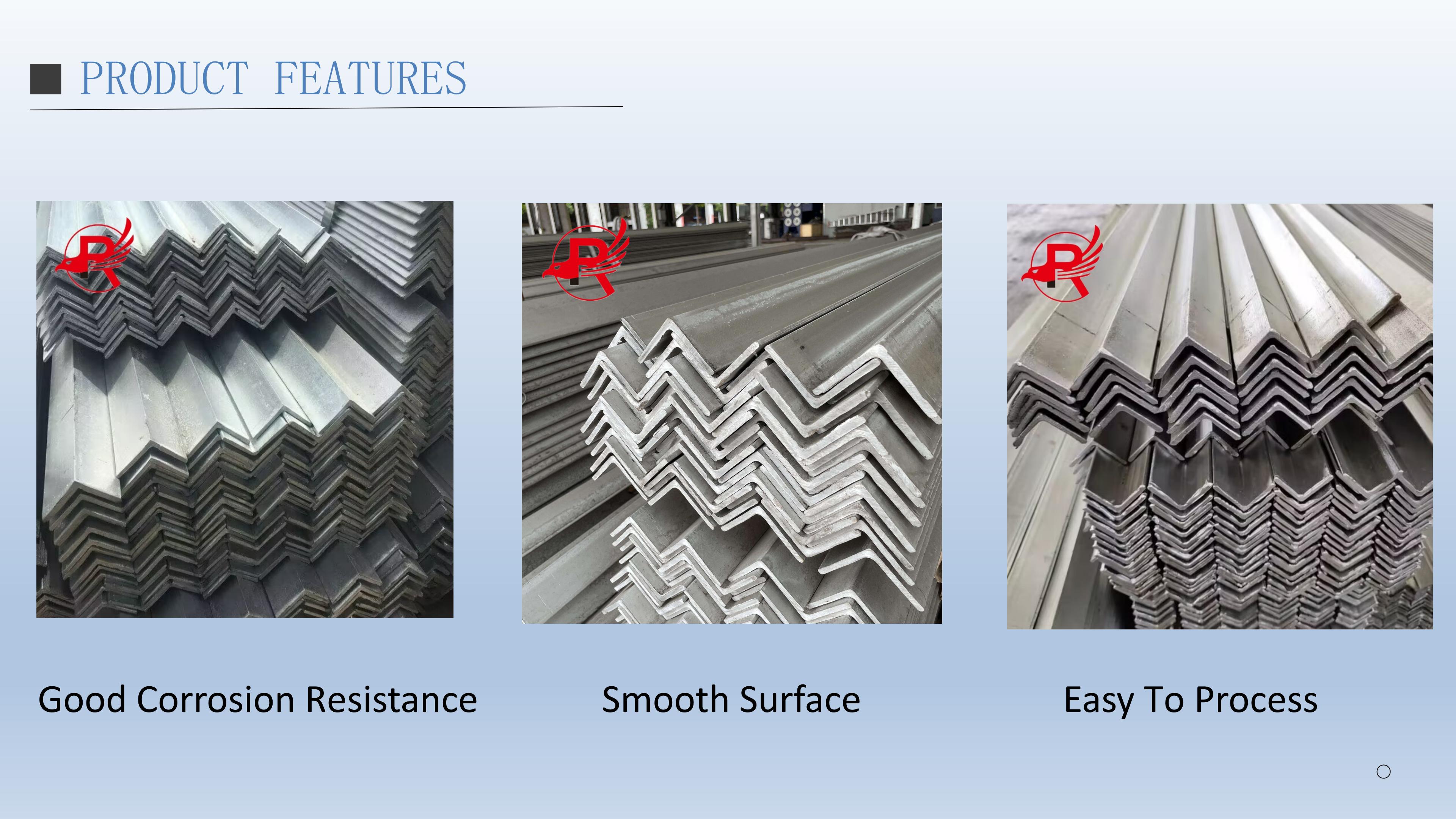
Features
Angle bars, also known as angle iron or steel angles, are L-shaped metal bars commonly used in construction, manufacturing, and various structural applications. Here are some of the features and common uses of angle bars:
Features:
- Structural Support: Angle bars are commonly used to provide structural support in building construction. They are often used to frame corners, support beams, and reinforce joints.
- Versatility: Angle bars can be easily cut, drilled, welded, and manipulated to fit specific structural requirements, making them versatile for a wide range of applications.
- Strength and Stability: The L-shaped design of angle bars provides inherent strength and rigidity, making them suitable for load-bearing and bracing applications.
- Different Sizes and Thicknesses: Angle bars are available in a variety of sizes, thicknesses, and lengths to accommodate different structural and industrial needs.
Common Uses:
- Construction: Angle bars are widely used in the construction industry for framing, support structures, and bracing in buildings, bridges, and other infrastructure projects.
- Manufacturing: They are used in the fabrication of machinery, equipment, and industrial platforms due to their strength and rigidity.
- Shelving and Racking: Angle bars are commonly used to build shelving units, storage racks, and warehouse structures due to their load-bearing capabilities.
- Mending Plates: They can be used as mending plates to reinforce wood joints and connections in woodworking and carpentry applications.
- Decorative Applications: In addition to structural and industrial uses, angle bars can also be used for decorative purposes, such as in furniture making and architectural design.
Application
Angle bars, also known as L-shaped metal bars or angle irons, have a wide range of applications across various industries. Some common applications of angle bars include:
- Structural Support: Angle bars are commonly used in construction for framing, support structures, and bracing in buildings, bridges, and other infrastructure projects. They provide stability and structural support at corners and intersections.
- Industrial Machinery: Angle bars are used in the construction of machinery, equipment frames, and industrial platforms due to their strength and rigidity.
- Shelving and Racking: Angle bars are often used to construct shelving units, storage racks, and warehouse structures due to their load-bearing capabilities and ability to provide support for storage systems.
- Architectural and Ornamental Applications: Angle bars are also used for decorative and architectural purposes in the construction and design of structures, furniture, and ornamental fixtures due to their clean lines and versatile design.
- Reinforcement and Bracing: They are employed to reinforce and brace structures, providing additional strength and stability in various metalworking, construction, and fabrication applications.
- Mending and Repair: Angle bars are used as mending plates to reinforce wood joints, fix damaged structures, and connect different components in woodworking, carpentry, and repair projects.
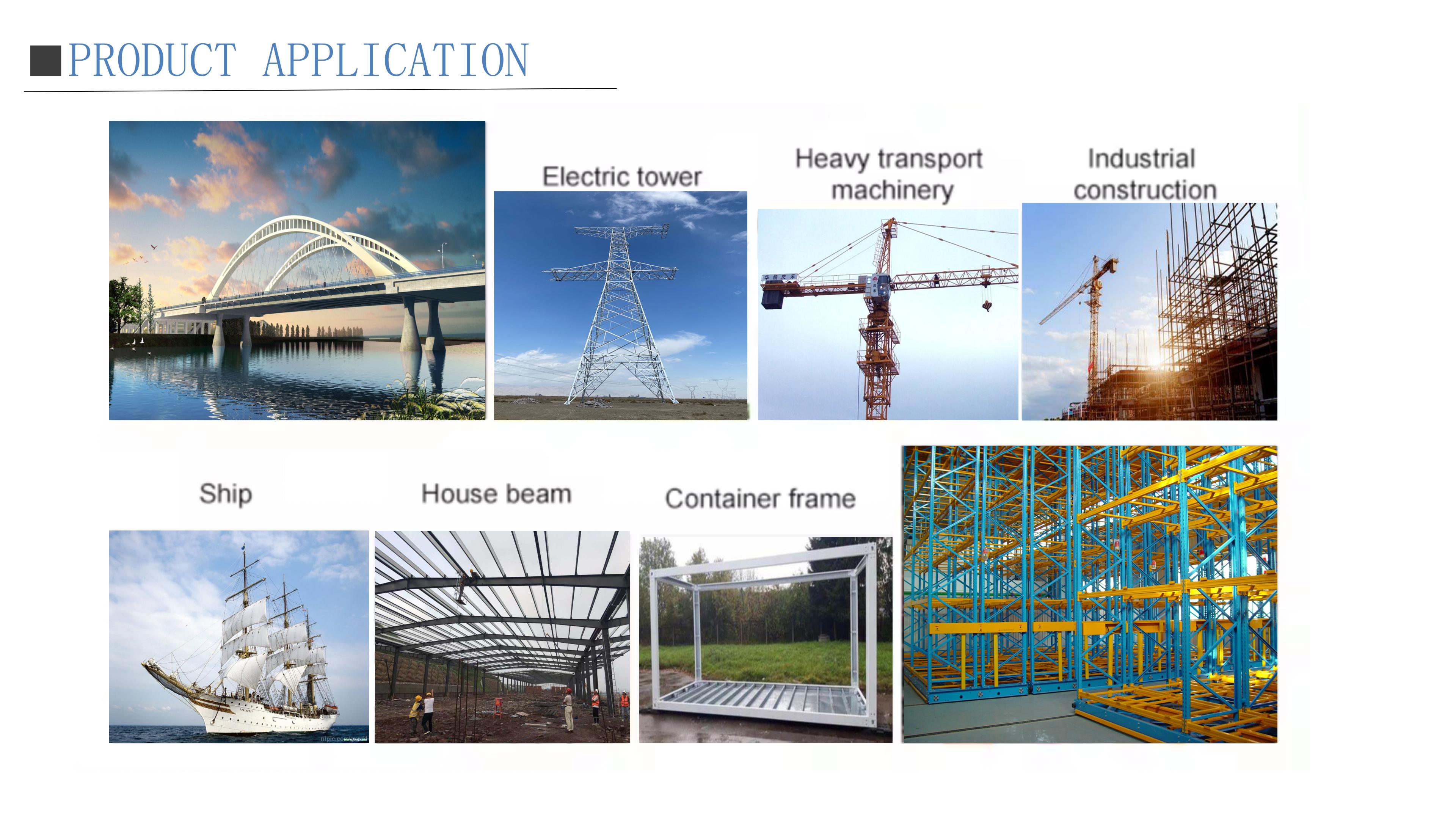
Packaging & Shipping
Angle steel is generally packaged appropriately according to its size and weight during transportation. Common packaging methods include:
Wrap: Smaller Angle steel is usually wrapped with steel or plastic tape to ensure the safety and stability of the product during transportation.
Packaging of galvanized Angle steel: If it is galvanized Angle steel, waterproof and moisture-proof packaging materials, such as waterproof plastic film or moisture-proof carton, are usually used to prevent oxidation and corrosion.
Wood packaging: Angle steel of larger size or weight may be packaged in wood, such as wooden pallets or wooden cases, to provide greater support and protection.
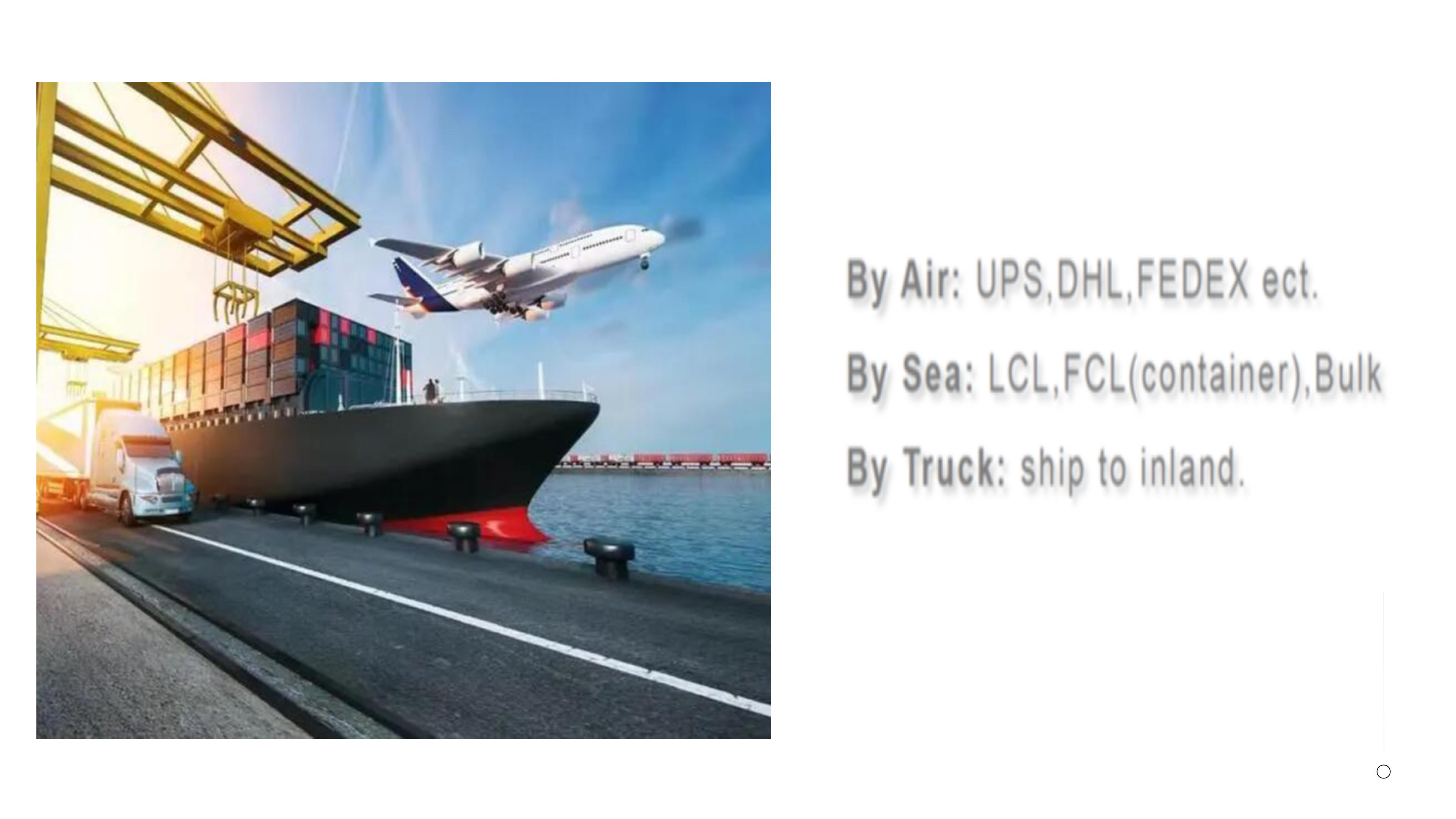
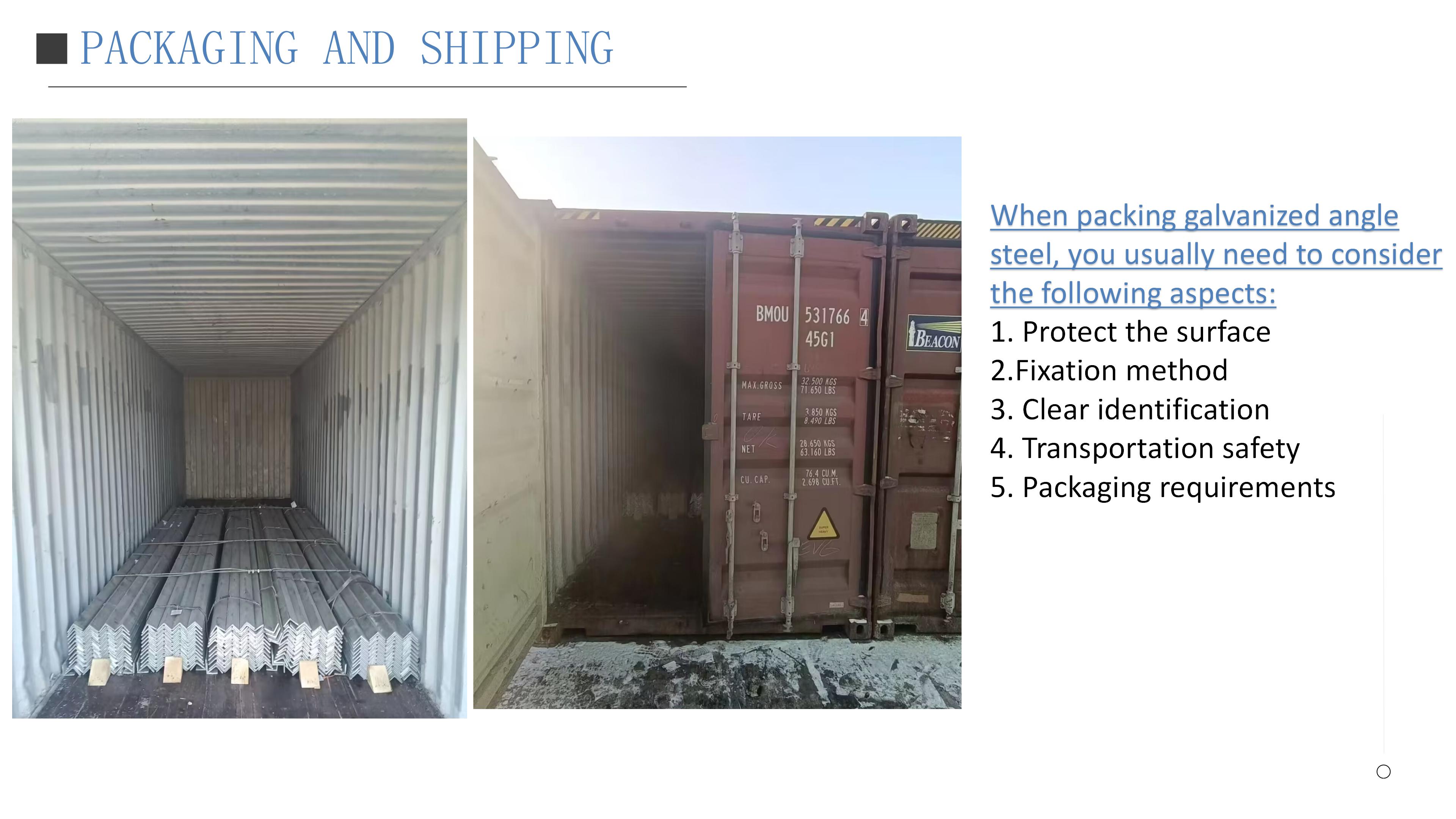
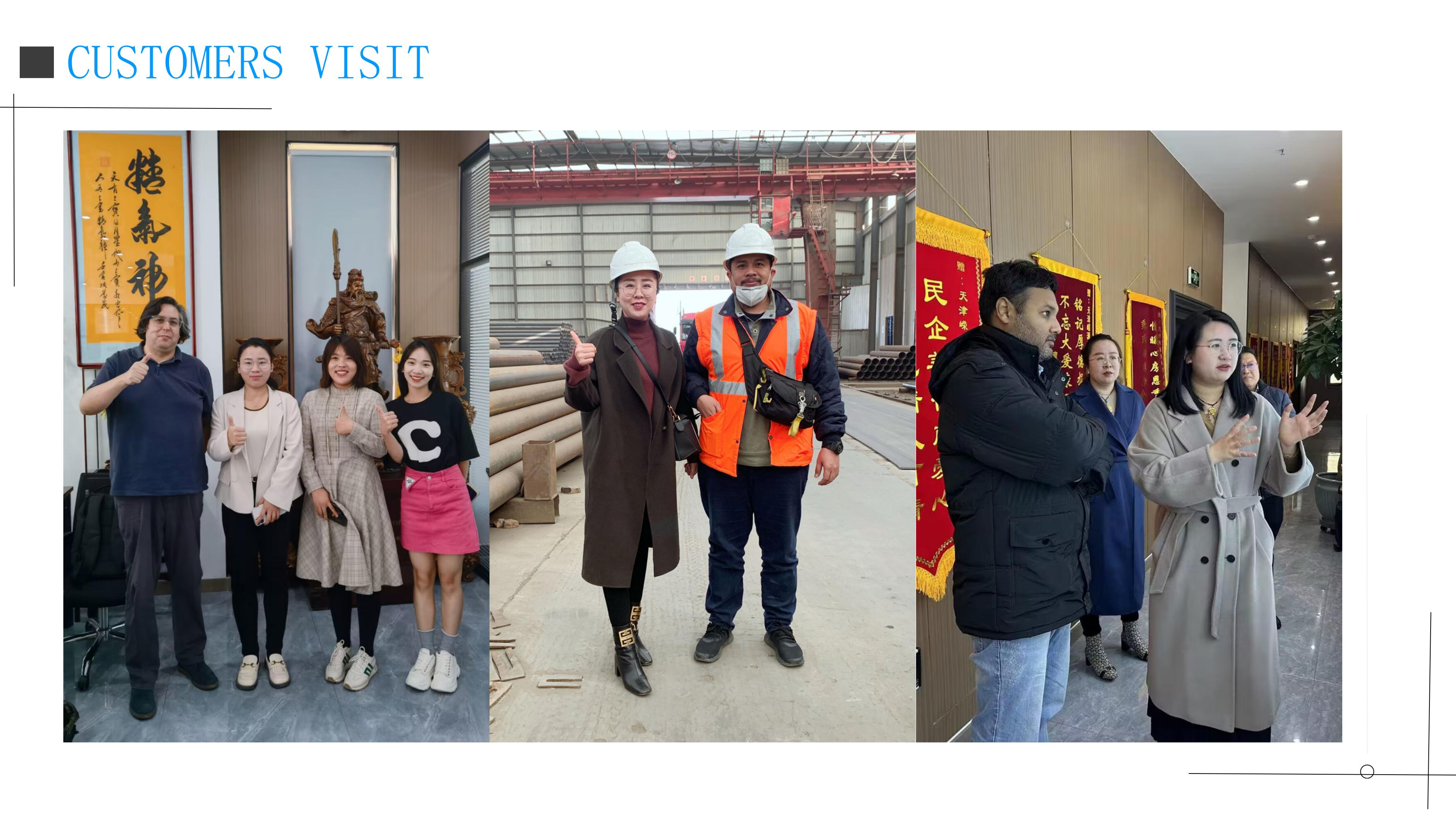
FAQ
1.How can I get a quotation from you ?
You can leave us message, and we will reply every message in time.
2.Will you delivery the goods on time?
Yes,we promise to provide best quality products and delivery on time. Honesty is our company's tenet.
3.Can I get samples before order ?
Yes, of course. Usually our samples are free,we can produce by your samples or technical drawings.
4.What is your payment terms?
Our usual payment term is 30% deposit, and rest against B/L. EXW, FOB,CFR, CIF.
5.Do you accept the third party inspection?
Yes absolutely we accept.
6.How do we trust your company?
We specialise in steel business for years as golden supplier, headquarter locates in Tianjin province, welcome to investigate in any ways, by all means.

